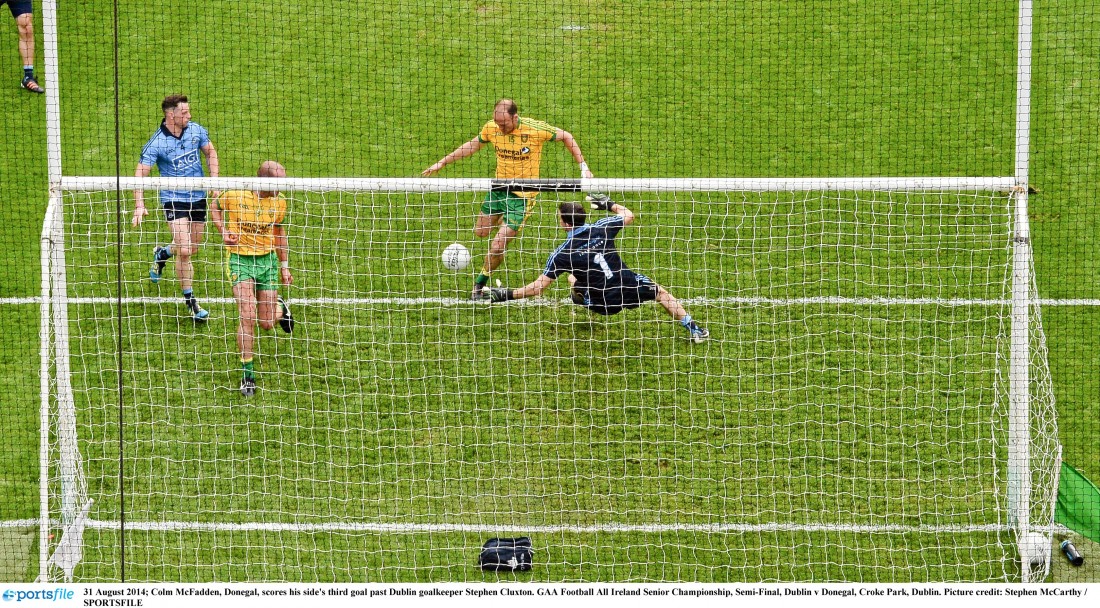CONTINUING my theme of following up on my tactical coaching corner with Shane Stapleton on Ourgame.ie, I am looking this week at ‘Transition play in Gaelic Football.’
Some people believe that transition is a word that seems to have become fashionable or trendy just recently but the reality is it has always existed.
Transition by definition is the process or a period of changing from one state or condition to another. Words associated with transition play include change, move, conversion, changeover, transformation, alteration. In simple layman’s terms, for Gaelic football it simply means the ability to change from defence to attack or attack to defence.
How to coach transition play effectively and efficiently is what all coaches want to know, but before we decide how to coach it we must understand what transition play means to coaches in the game.
Back in 2017 I invited Peter Donnelly down to my school for my annual coaching conference to deliver a session on effective transition play.
For the booklet I got 14 coaches from the highest level of our game to send me on their thoughts on transition play. Some of the key words that featured in a lot of the coaches’ thoughts were speed, balance, attack, defence, shifting, numbers, decision-making, coaching, games, strategies, width, depth, penetration, cover, pace, purpose, communication, understanding, fluidity, scoring, tackling, work-rate and mentality.
My own opinion of what I see transition play as is pretty straight-forward. Transition play, for me, is everywhere in the game.
In my opinion it’s not just one single physical aspect that needs worked on in your training sessions, it’s actually a complete mindset change. Every game played in training should consist of a transitional element, whether that be from a defensive mindset switch to an offensive mindset or vice-versa. That mentality can only be achieved through playing conditioned games, full-sided games or focus games in training, performed at speed with the emphasis constantly on transitioning at speed.
What I mean by the above is pretty straight-forward. If you run a simple forwards v backs small-sided game at training and it simply ends with the forwards scoring all the time, and you cannot understand why in games that every time your forwards score they let the opposition get a short kick-out away or every time they are turned over they aren’t quick enough to press the ball or organise the cover, it is because you haven’t facilitated this process in training.
To improve that, switch your mindset to think like this – when we win the ball everyone is thinking front foot, attack, create scores, hurt the opposition. Or when we lose the ball, press at the source, win it back quickly and organise and provide cover.
You must replicate and simulate this environment at training as much as you possible can.
Really efficient teams who turn the ball over on the opposition will normally create a scoring chance within 10 seconds, because they have been well coached in transitioning from a defensive mindset to an attacking mindset. Everything will be done at pace, it will be slick, fluid, and there will be a purpose to their play.
Having athleticism and mobility in your team is key to effective transitioning, you need to be able to move at pace, but not only that, making good decisions at speed is important also and having the ability to do both at top level takes a lot of hard work on the training ground as well effective coaching.
A few weeks back, Ger O’Connor delivered a very interesting webinar on transition play, an extremely enjoyable and informative session.
Interestingly he produced a number of very facts based on research in a large number of games. Goalkeepers who get their restarts away in less than five seconds had an 80 percent chance of creating a scoring chance at the other end, greater than five seconds could see this drop by nearly 20 percent.
When a team counter-attacks and transitions from defence to attack, if the first pass is a hand-pass in comparison to a kick-pass the team has a much greater chance of producing a scoring opportunity, probably due to the fact it enables more players to support the ball carrier, and to provide more numbers in attack.
Ger concluded his webinar that evening by showing us some great examples of games we could incorporate into our training when we resume, including some superb ideas from his friend and our former colleague at the Gaelic Life and one of the best coaches ever, the late great John Morrison.
comment@gaeliclife.com
Receive quality journalism wherever you are, on any device. Keep up to date from the comfort of your own home with a digital subscription.
Any time | Any place | Anywhere













